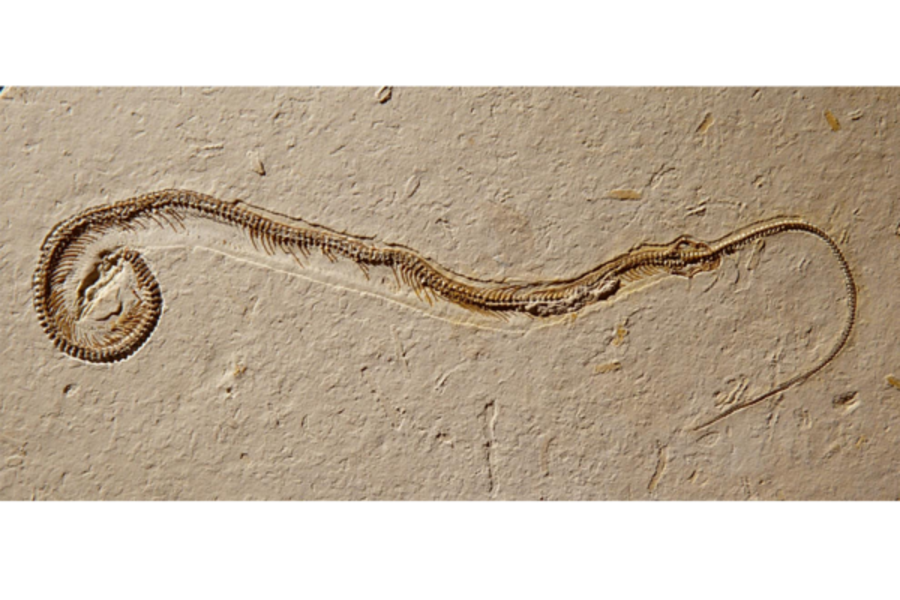Four-legged snake sheds light on mysteries of reptile evolution
Loading...
The fossil of a four-legged snake has been discovered by a team of scientists, bringing with it a new theory as to how modern-day snakes evolved.
David M. Martill, from the University of Portsmouth, who found the fossil in the collection of a German museum, said the fossil showed that snakes evolved from burrowing lizards and not from marine lizards.
Snakes have long been thought to have evolved from four-legged lizards, losing their legs over time. But scientists have debated whether those ancestral lizards were land-based or marine creatures.
“It is generally accepted that snakes evolved from lizards at some point in the distant past,” Dr. Martill said in a press statement. “What scientists don’t know yet is when they evolved, why they evolved, and what type of lizard they evolved from. This fossil answers some very important questions, for example it now seems clear to us that snakes evolved from burrowing lizards, not from marine lizards.”
"This is the most primitive fossil snake known, and it's pretty clearly not aquatic," Nick Longrich, a paleontologist and senior lecturer at the University of Bath, who worked with Martill on the research, told the BBC.
Dr. Longrich explains that the creature's tail wasn't paddle-shaped for swimming and it had no sign of fins. Meanwhile, its long trunk and short snout were typical of a burrower. "It's pretty straight-up adapted for burrowing," he said.
The fossil, discovered in Brazil, has been named Tetrapodophis amplectus, (grasping four-legged snake), because its four limbs each ends in five seemingly functional digits that scientist say may have been used to grasp.
It dates from the Cretaceous period and is 110 million years old, making it the oldest snake fossil discovered.
Tetrapodophis amplectus is very small, measuring 20 centimeters from head to toe, although it is possible that it could have grown much larger. Its head is the size of an adult fingernail, and the smallest tail bone is only a quarter of a millimeter long.
While speaking to Science in Action on the BBC World Service, Longrich described the snake from the fossil further.
"It is a perfect little snake, except it has these little arms and legs, and they have these strange long fingers and toes. The hands and feet are very specialized for grasping. So when snakes stopped walking and started slithering, the legs didn't just become useless little vestiges - they started using them for something else. We're not entirely sure what that would be, but they may have been used for grasping prey, or perhaps mates.”
Previous research has detailed two-legged snake fossils, but this is the first known snake ancestor to sport four legs.





